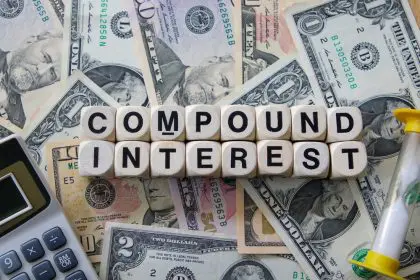You check your credit card statement every month, make your minimum payment on time, and feel like you’re managing your finances responsibly. But there’s one mistake that could be costing you thousands of dollars every year without you even realizing it — and it’s probably happening in your wallet right now.
The mistake? Carrying a balance from month to month instead of paying off your full statement balance. This seemingly small financial habit can easily cost you $10,000 or more annually, depending on your balance and interest rate.
The math that will shock you
Let’s say you carry an average balance of $5,000 on a credit card with a 24% annual percentage rate — that’s pretty typical for many cards today. You’re not just paying $1,200 in interest per year. You’re also losing the opportunity to invest that money or pay down other debts.
But here’s where it gets really expensive. If you only make minimum payments, most of your payment goes toward interest, not principal. On a $5,000 balance with minimum payments, you might pay only $50-75 toward the actual debt each month while $100 goes straight to interest.
That $5,000 balance could take over 20 years to pay off if you only make minimum payments, and you’ll end up paying more than $15,000 total. The credit card companies love this because they’re essentially earning 24% annually on money they lent you.
Now multiply this by multiple cards or higher balances, and you can see how the costs spiral quickly. People with $20,000 in credit card debt often pay $4,000-6,000 per year just in interest charges.
Why minimum payments are a trap
Credit card companies design minimum payment structures to keep you in debt as long as possible. The minimum payment is usually calculated as a small percentage of your balance — often just 2-3% — which barely covers the interest charges.
This creates an illusion of affordability. A $5,000 balance might have a minimum payment of only $100-150, which feels manageable. But you’re essentially renting that money from the credit card company at an extraordinarily high rate.
What makes this particularly insidious is that your minimum payment decreases as your balance goes down, which extends the payoff time even further. You end up in a debt treadmill where you’re making payments but barely making progress.
The compound interest nightmare
Credit card interest compounds daily, which means you’re paying interest on your interest. This is compound interest working against you instead of for you, and it’s one of the most powerful wealth-destroying forces in personal finance.
Every day you carry a balance, interest gets added to your debt. The next day, you pay interest on the original balance plus the previous day’s interest. This snowball effect makes your debt grow faster than many people realize.
I’ve seen people who thought they were managing their debt responsibly discover that their balances were actually increasing despite making regular payments. This happens when minimum payments don’t even cover the monthly interest charges.
The opportunity cost multiplier
The real cost of credit card debt goes beyond just the interest you pay. It’s also the money you can’t invest, save, or use for other financial goals because it’s tied up in debt payments.
If you’re paying $500 monthly toward credit card debt instead of investing that money in index funds averaging 7% annual returns, you’re missing out on significant wealth building. Over 20 years, that $500 monthly investment could grow to over $245,000.
This is called opportunity cost, and it’s often larger than the direct interest payments. You’re not just losing money to interest — you’re losing the chance to build wealth with that same money.
How rewards cards can make it worse
Many people justify carrying balances because they’re earning rewards points or cash back. This is almost always a losing proposition. Even the best rewards cards offer 1-2% back, while you’re paying 20-30% in interest on balances.
Earning $50 in cash back while paying $1,000 in interest isn’t a win — it’s a $950 loss. Credit card companies heavily promote rewards programs because they know that people who chase rewards often carry balances, which more than offsets the cost of the rewards.
The psychological trap of available credit
Having available credit creates a psychological spending cushion that can lead to overspending. When you see a $10,000 credit limit, it feels like you have $10,000 to spend, even though borrowing that money comes at a steep cost.
This available credit can also create a false sense of financial security. People think they have an emergency fund when they really have access to expensive debt. Using credit cards for emergencies often turns temporary financial stress into long-term financial burden.
Breaking free starts with mindset
The first step to avoiding this expensive mistake is changing how you think about credit cards. They’re not extra money — they’re loans with extremely high interest rates that should be paid off immediately.
Start treating your credit card like a debit card. If you can’t afford to pay cash for something, you can’t afford to put it on a credit card either. This mindset shift alone can prevent you from falling into the balance-carrying trap.
Set up automatic payments for your full statement balance, not just the minimum. This ensures you never accidentally carry a balance and pay interest.
The simple solution that saves thousands
Pay off your full statement balance every month, no exceptions. If you can’t pay the full balance, stop using the card until you can. This simple rule can save you thousands of dollars annually and prevent years of debt payments.
If you’re already carrying balances, make paying them off your top financial priority. Consider strategies like the debt avalanche (paying minimums on all cards while putting extra money toward the highest interest rate card) or debt consolidation to lower interest rates.
Your money deserves better
Credit card companies make billions in profit from people who carry balances month to month. That profit comes directly from your pocket in the form of interest payments that could have been used to build wealth instead.
Don’t let a simple financial habit cost you $10,000 or more per year. Pay off those balances, use credit cards as tools rather than crutches, and redirect that money toward building the financial future you actually want.
















